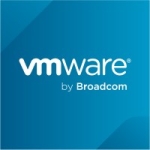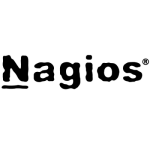What is our primary use case?
First off, to clarify some confusion, Microsoft recently changed the name of a previous on-premises tool called SCCM (Microsoft System Center Configuration Manager) to MECM (Microsoft Endpoint Configuration Manager).
In our company, we originally used SCCM with all our Microsoft products, but after a while, many companies including ours started to move their on-premises devices to the cloud, and MECM, along with Intune on an Azure tenant, became our preferred solution for managing devices that are both on-premises and in the cloud.
I worked with a team to complete the upgrade of our SCCM solution to the current version of MECM, which we now use exclusively to deploy software packages, scripts, updates, and operating systems via task sequences. Then, after buying an Azure AD tenant, we took out a license for Microsoft Intune (now part of MECM), in order to link our use of MECM for managing devices that exist on the internet, such as in the case of teleworkers.
How has it helped my organization?
MECM has given us many benefits, but the main benefit is that we no longer have to deploy software manually onto hard drives or with USB flash drives, and instead you can do everything over the network.
What is most valuable?
Our company is spread over several regions, with the headquarters located in Paris, France, and with two remote locations in Paris and two remote locations in Morocco, where I am based. With MECM, we can deploy distribution points (e.g. file servers) in different areas, such that we can deploy packages from any of the distribution points that are nearest to the intended location.
This is useful because when a device needs a package, it will trace the location of the nearest distribution point from which it can source the package, to speed up the transfers over the internet and not impact the overall bandwidth.
I manage software updates and operating systems for devices, and within seconds, we can remotely deploy a system for, say, 2,000 devices. Not only that, but we can also deploy scripts and create comprehensive compliance rules.
What needs improvement?
There are several challenges regarding MECM worth mentioning.
With MECM, you can't deploy packages remotely for end users who are working from home, unless you pass them through Intune with an Azure tenant. After initiating a VPN connection, the remote machine will contact Intune in order to retrieve packages, scripts, etc.
Intune is a great solution for managing devices but it is expensive because you also have to buy an Azure service called CMG (Cloud Management Gateway). CMG works as an intermediary between your on-premises MECM server and remote end users, via email authentication, but it can be difficult to integrate with MECM and costly.
There are also some limitations of Intune, such as the inability to deploy operating systems the traditional way via task sequences, making it such that we have to use Autopilot to deploy operating systems. Though, with Intune and Autopilot you can deploy what you have on-premises, including GPO strategies for local endpoints and general endpoint configurations.
It is important to note that MECM by itself can only manage Microsoft devices, despite how Intune can be used alongside it to manage multiple platforms (e.g. Android / Apple devices).
Finally, there is a steep learning curve when it comes to administration. A lot of experience is needed in terms of troubleshooting, as this is one of the most difficult tasks in MECM. We were seven people in a group and I was the only one that had the patience to do the troubleshooting at times. If we have a problem with a certain feature in MECM, we need to observe the log, reading and analyzing, to discover the problem.
For how long have I used the solution?
I have worked with Microsoft Endpoint Configuration Manager for six years.
What do I think about the stability of the solution?
MECM is stable. However, whenever Microsoft makes changes or updates to the workstation operating system (Windows 10, for example), you also have to adapt your version in the server accordingly. So, in future, if you're going to be deploying Windows 11, you will also need to upgrade your version of Windows in MECM. This means that you are always thinking about which versions of operating systems you have in your workstations as well as which versions you have in MECM.
You have to do such maintenance every six months, where you need to consider the versions of operating systems while upgrading and testing to see if they are compatible with your MECM. On the whole, it ends up being a lot of work.
What do I think about the scalability of the solution?
To improve scalability across on-premises and cloud environments, Microsoft introduced Intune which is a service implemented with MECM in the cloud in order to provide communication with devices in remote locations. So if you need to manage remote devices with MECM, you can do so by buying the Azure tenant service, and attach it to your MECM.
In total, we are using MECM and Intune to configure almost 2,000 devices across the company.
How are customer service and support?
We haven't had many problems that have warranted the use of Microsoft support. Thankfully, there are a lot of people on the internet who are also working with MECM so we have a lot of documentation to work with. If you follow the documentation, you don't need the support of Microsoft.
Which solution did I use previously and why did I switch?
Before using the original SCCM, we had never used anything similar.
How was the initial setup?
It's not easy to implement MECM at first because you are required to have some experience on how to deploy the database for MECM. At our company we already have people working in the data center who have lots of experience in deploying with VMs and virtualization (e.g. Hyper-V and VMware), but for me, implementing MECM was difficult.
It took us around six months to complete the entire implementation because our company has several remote locations which have to be served by the remote distribution server and distribution point servers, and after implementing each server, you have to test it extensively before you put it into production.
What about the implementation team?
We did the implementation by ourselves. We have staff in different areas who helped deploy MECM, including support staff and data center personnel. For example, one person takes care of the AD server, and another takes care of our use of Intune. Yet another group takes care of the IT, engineering, and system administration, of which three people might be there just to handle the load balancing. It all depends on the requirements at the time.
What's my experience with pricing, setup cost, and licensing?
If you have a small company and you have a simple need to install operating systems remotely, you can install WDS (Windows Deployment Service) on a server, which can help with the task of deploying operating systems and software remotely. But if your company has a lot of applications and devices that need monthly updates, it is better to buy a license for MECM.
I don't have the figures for the licensing because it's another group that manages the accounts and licensing for all the servers, but I believe it's quite expensive. The reason I say it's expensive is because we have a lot of products in our company, especially Microsoft products such as Microsoft Office and Microsoft System Center Orchestrator.
Along with buying a license for MECM, we also have to buy a service called CMG (Cloud Management Gateway) which is a virtual machine in the cloud with which you can link your MECM to the Azure tenant so as to manage teleworkers. To explain a bit further, the teleworkers' machines communicate with the CMG as a tenant service in Azure, which then communicates with your MECM and on-premises policies, which then communicates back to the teleworker client.
This is a necessary process, but at least it is only a small feature and it is not difficult to add this relationship to your MECM as long as you have people experienced in the Azure tenant service.
What other advice do I have?
MECM is a solution that needs a team that is well-experienced in implementation, administration, troubleshooting, and more, but the reward is worth the effort. My biggest piece of advice is that before you integrate it into your company, make sure you have the required skills.
I would rate MECM an eight out of ten.
Which deployment model are you using for this solution?
Hybrid Cloud
Disclosure: My company does not have a business relationship with this vendor other than being a customer.






















